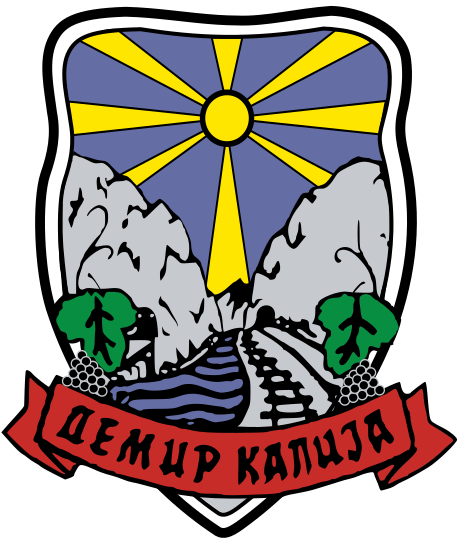
Demir Kapija is a small town in the Republic of Macedonia, located just before the majestic Demir Kapija Gorge, on the right side of the Vardar River. It is both an important railway station and a stop along the international E75 highway.
Situated in the southern part of the Tikvesh region, the Bosava River flows through the town before joining the Vardar nearby. Demir Kapija lies at an elevation of 115 meters above sea level.
The history of Demir Kapija is inseparable from its gorge — a passage where armies clashed, rulers drew borders, and feudal lords once held power.
During the Ottoman period, the fortress settlement was abandoned and the population was moved north to a site called Banja (“Baths”), named for its thermal springs that have been known since antiquity.
For centuries, life here was marked by wars, occupations, and hardship. Local production was often looted by passing armies, preventing economic growth. Under five centuries of Ottoman rule, the people remained under the control of Turkish feudal lords. Independence only came after 1912–1913, but was soon replaced by Bulgarian and later Serbian occupation.
In World War I, Bulgarian–German and Serbian–English forces clashed in the area, leaving the town devastated. The Kingdom of Yugoslavia (1919–1941) brought little improvement, as no significant investments were made.
During World War II, Demir Kapija’s strategic location turned it into a heavily fortified point for German and Bulgarian troops. Fierce battles raged in 1943–1944, and the gorge became vital for German retreat from Greece. Thanks to the partisans, Demir Kapija was finally liberated in 1944.
After the war, many Macedonian families displaced from Trlis, Drama (Aegean Macedonia) resettled in Demir Kapija, giving the town new life and identity.
In Demir Kapija, traditions are more than memory — they are a way of life. Songs, dances, embroidery, and folk costumes are cherished as treasures, passed from one generation to the next. Cultural events and family celebrations keep alive the rhythm of our ancestors’ voices and steps.
Part of the Tikvesh wine region, Demir Kapija is home to wineries that embody Macedonian tradition and excellence. Famous estates such as Popova Kula and Kamnik produce wines that capture the essence of this land.
No table here is complete without homemade pita, sarma, or the beloved tavče gravče, dishes that connect every family meal to memory and love.
Life in Demir Kapija is marked by annual gatherings and celebrations:
Whether in America, Australia, Canada, or somewhere in Europe, Demir Kapija lives within us — in the scent of vineyards, in the voices of our grandparents, in memories of childhood summers running across the hills.
Demir Kapija is not just a town. It is a root.
And for anyone who has ever loved it, that feeling will never fade.